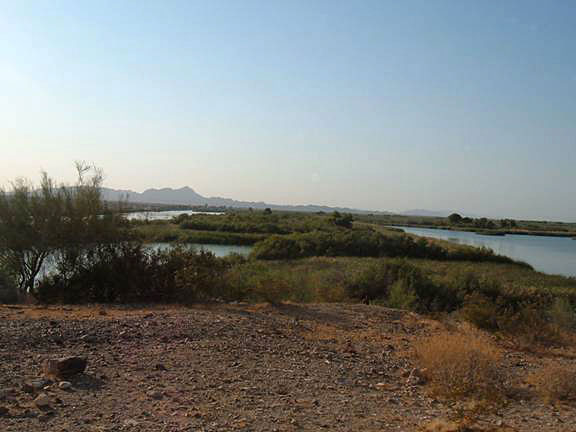Western Reservoirs Could Be Dry By 2050

There's a one-in-two chance that the water reservoirs of the Colorado River will dry up by 2050 if water management practices remain unchanged in our warming world, a new study finds.
Roughly 30 million people — including many in Arizona and Southern California — depend on the Colorado River for drinking and irrigation water.
The Colorado River system is enduring its 10th year of drought, with the reservoir system currently at 59 percent of capacity, about the same as this time last year.
Previous studies have warned of the potential for water shortages with the drier conditions in the West brought about by climate change. The region's growing population has also put pressure on the water supplies of the desert West.
Predicting future flows
The researchers, including Balaji Rajagopalan of the University of Colorado in Boulder, examined the effects of a range of reductions to the water flowing through the Colorado River and held in local reservoirs, as well as how different water management strategies might affect those water levels.
Rajagopalan and his colleagues found that even under the harshest drying caused by climate change, the large storage capacity of reservoirs on the Colorado might help sustain water supply for a few decades, but only if new management practices are enacted.
Sign up for the Live Science daily newsletter now
Get the world’s most fascinating discoveries delivered straight to your inbox.
"This study, along with others that predict future flow reductions in the Colorado River Basin, suggests that water managers should begin to re-think current water management practices during the next few years, before the more serious effects of climate change appear," Rajagopalan said.
Specifically, the researchers found that through 2026, the risk of fully depleting reservoir storage in any given year remains below 10 percent under any scenario of climate fluctuation or management alternative. During this period, the reservoir storage could even recover from its current low level, according to the researchers.
Part of this is due to the enormous capacity of the reservoirs: The river hosts more than a dozen dams along its 1,450-mile (2,330-kilometer) journey from Colorado's Rocky Mountains to the Gulf of California. Total storage capacity of reservoirs on the Colorado exceeds 60 million acre feet, almost four times the average annual flow on the river; and the two largest reservoirs — Lake Mead and Lake Powell — can store up to 50 million acre feet of water.
But if climate change results in a 10 percent reduction in the Colorado River's average stream flow as some recent studies predict, the chances of fully depleting reservoir storage will exceed 25 percent by 2057, the study found. If climate change results in a 20 percent flow reduction, the chances of fully depleting reservoir storage will exceed one in two by 2057, Rajagopalan said.
"On average, drying caused by climate change would increase the risk of fully depleting reservoir storage by nearly ten times more than the risk we expect from population pressures alone," Rajagopalan said. "By mid-century this risk translates into a 50 percent chance in any given year of empty reservoirs, an enormous risk and huge water management challenge."
Water conservation is key
Implementing more aggressive management practices — in which downstream releases are reduced during periods of reservoir shortages — could reduce the risk of depleting all reservoir storage during this period, the study suggests.
The magnitude of the risk will ultimately depend on the extent of climate drying and on the types of water management and conservation strategies established.
"Water conservation and relatively small pre-planned delivery shortages tied to declining reservoir levels can play a big part in reducing our risk," said study co-author Ken Nowak, a graduate student at CU-Boulder.
"The important thing is not to get lulled into a sense of safety or security with the near-term resiliency of the Colorado River basin water supply. If we do, we're in for a rude awakening," he added.
The study, which will be detailed in an upcoming issue of the journal Water Resources Research, was conducted with support from the Western Water Assessment, a joint venture of CU-Boulder and the National Oceanic and Atmospheric Administration (NOAA), as well as CADSWES and the Bureau of Reclamation.











